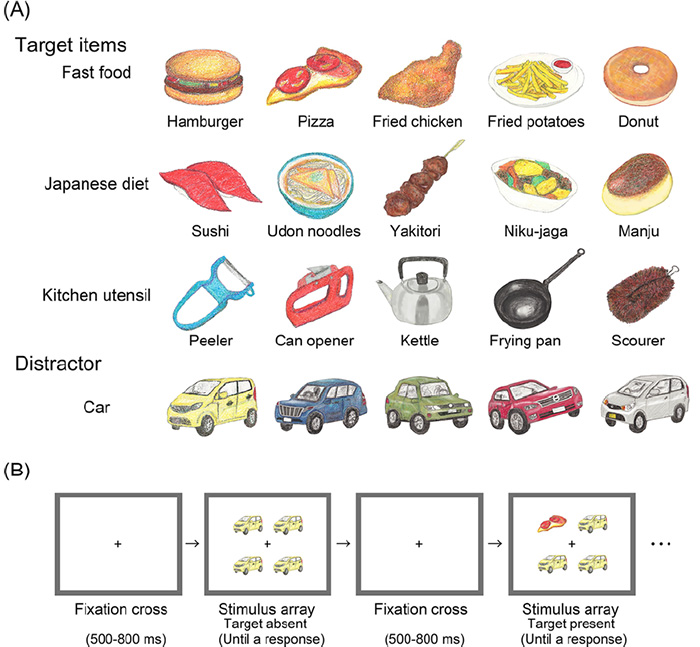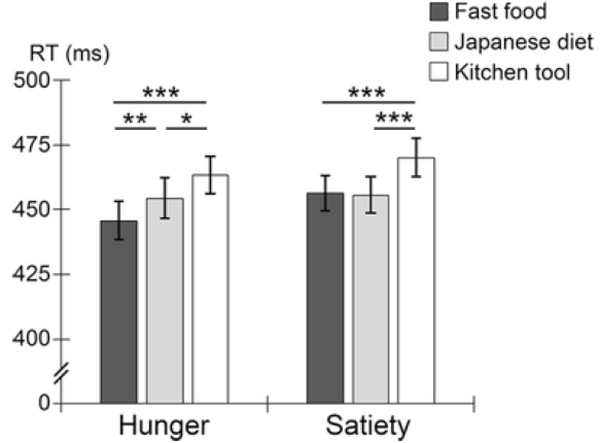SATO Wataru Laboratory
Hunger promotes the detection of high-fat food
(Sawada, Sato, Minemoto, & Fushiki: Appetite)
Efficient detection of food is important for an organism's survival.
The results of previous experimental studies are consistent with this statement: food is detected in photographs faster than non-food items.
Moreover, fat content modulates the speed of food detection.
However, it is not known whether such sensitivity to the fat content of food is modulated by participants' internal states.
To investigate these issues, we measured reaction times during a visual search task in which participants in fasting and postprandial states detected high-fat food (fast food), low-fat food (Japanese diet), and non-food (kitchen utensils) targets within crowds of non-food distractors (cars).

Our results indicate that both hungry and satiated groups detected food targets more rapidly than non-food targets.
The high-fat foods were detected more rapidly than low-fat foods in the hungry group, whereas no difference was observed between reaction times when satiated participants detected high-fat and low-fat food targets.

These results suggest that food captures our visual attention even when we are satiated, and that fat detection efficiency is heightened when we are hungry.
Return to
Recent Research.
Return to
Main Menu.

